-
01-01-2016
Modified early warning score: evaluation of trauma patients
Revista Brasileira de Enfermagem. 2016;69(5):906-911
Abstract
Modified early warning score: evaluation of trauma patients
Revista Brasileira de Enfermagem. 2016;69(5):906-911
DOI 10.1590/0034-7167-2015-0145
Views0See moreABSTRACT
Objective:
to identify the severity of patients admitted to an emergency trauma.
Method:
A cross-sectional and retrospective study with 115 trauma patients classified as orange (Manchester System), from June 2013 to July 2014. The data were presented as mean and standard deviation, in addition to the Pearson Chi-square test, One-Way ANOVA and Tukey tests.
Results:
from the sample, 81.7% were male with mean age of 39.46±19.71 years. Higher incidence of major trauma (48.7%) and traumatic brain injury (37.4%). At the end of the outcome and MEWS, most cases that had score 1 to 3 were referred to the operating room and the ICU.
Conclusion:
the start point of MEWS was 2 to 3 points, with significant increase in the severity of the situation of patients seen after 6 hours, and approximately half of the individuals underwent surgery, indicating that the scale is a good predictor of severity.
-
01-01-2016
Occupational health nurses: interdisciplinary experience in occupational health
Revista Brasileira de Enfermagem. 2016;69(5):897-905
Abstract
Occupational health nurses: interdisciplinary experience in occupational health
Revista Brasileira de Enfermagem. 2016;69(5):897-905
DOI 10.1590/0034-7167-2015-0113
Views0See moreABSTRACT
Objective:
to analyze the relationship of occupational health nurses with the other members of the Specialized Service in Safety Engineering and Occupational Medicine (SESMT) and characterize joint actions of these professionals in occupational health.
Method:
qualitative, exploratory, and descriptive study with 34 professionals of seven companies from the South Macroregion of the state of Rio Grande do Sul. Interviews and observations were conducted for content analysis of Bardin.
Results:
the SESMTs are multidisciplinary and intersectoral workers. Nurses have working relations of an interpersonal, technical/legal, and management of logistics/organizational nature, influenced by the technical division of work and by the division in the work environment of the staff, which distances areas, generates conflicts, and fragments the actions of the service.
Conclusion:
SESMT faces challenges to develop a work befitting their legal objectives, once staff and companies need to understand the importance of interdisciplinarity for the success of actions on the workers’ health and safety.
-
01-01-2016
Translation and adaptation of a pediatric early warning score
Revista Brasileira de Enfermagem. 2016;69(5):888-896
Abstract
Translation and adaptation of a pediatric early warning score
Revista Brasileira de Enfermagem. 2016;69(5):888-896
DOI 10.1590/0034-7167-2015-0096
Views0See moreABSTRACT
Objective:
to translate and adapt the BPEWS for the Portuguese language, with the purpose of verifying its applicability in the Brazilian context studied.
Method:
methodological study guided by international and nationally accepted recommendations for translation and adaptation of health measurement instruments. Stages of conceptual, item, semantic, operational and pre-test equivalence are described for obtaining the BPEWS Portuguese version to be used in Brazil.
Results:
the BPEWS version translated and adapted for Brazilian Portuguese (BPEWS-Br) identified, in the pilot study, that 26.6% of children were presenting warning signs for clinical deterioration.
Conclusion:
the BPEWS-Br seems to be applicable for the context studied, and its use might help nurses in the recognition and documentation of warning signs for clinical deterioration in hospitalized Brazilian children.
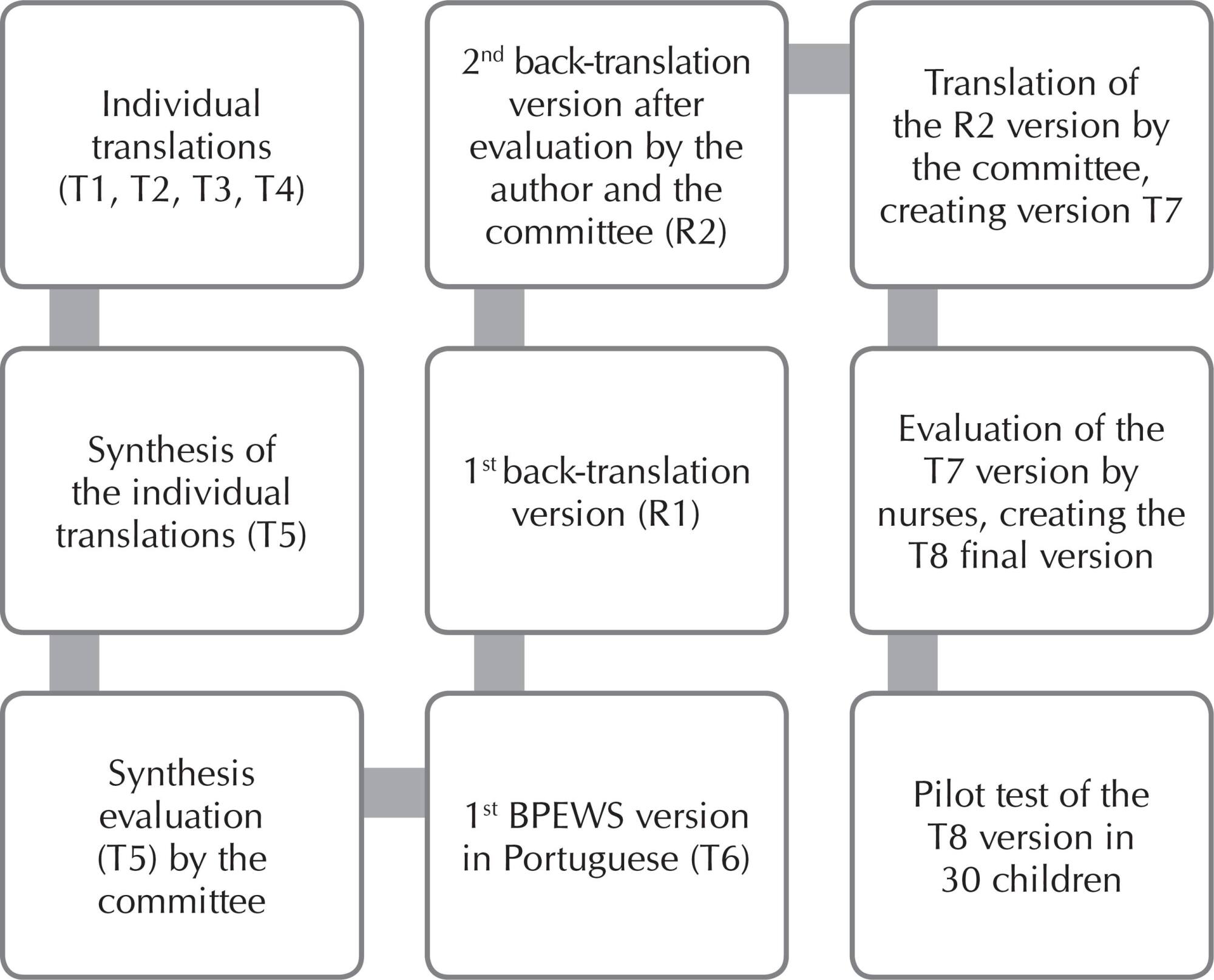
-
01-01-2016
Validation of the Nursing Activities Score in Portuguese intensive care units
Revista Brasileira de Enfermagem. 2016;69(5):881-887
Abstract
Validation of the Nursing Activities Score in Portuguese intensive care units
Revista Brasileira de Enfermagem. 2016;69(5):881-887
DOI 10.1590/0034-7167-2016-0147
Views0See moreABSTRACT
Objective:
to describe the process of adaptation and validation of the Nursing Activities Score to the Portuguese context.
Method:
this was a pilot study of adaptation and validation of the Nursing Activities Score with a sample consisting of 67 patients hospitalized in the intensive care units of three Portuguese hospitals. The construct validity was assessed through factor analysis procedures and the internal consistency of the items was measured through the Cronbach’s alpha coefficient.
Results:
a mean workload value of 63.04% (SD = 14.25; Median = 61.30) was obtained. Psychometric data revealed a Cronbach’s alpha of 0.71 in the total scale, indicating an acceptable accuracy. Confirmatory factor analysis suggested an appropriate adjustment between the model and the data (χ2(199) = 214.5, p = 0.214; CFI = 0.95; RMSA = 0.035).
Conclusion:
in the present study, the Portuguese version of the Nursing Activities Score was found to be a valid instrument, enabling a safe assessment of the workload of nurses.
-
01-01-2016
Managing educational practices for qualified nursing care in cardiology
Revista Brasileira de Enfermagem. 2016;69(5):872-880
Abstract
Managing educational practices for qualified nursing care in cardiology
Revista Brasileira de Enfermagem. 2016;69(5):872-880
DOI 10.1590/0034-7167-2015-0032
Views0See moreABSTRACT
Objective:
to understand significances attributed by nurses who manage nursing care to the individual affected by cardiovascular disease to relations, interactions and associations of the educational practices in a cardiovascular reference hospital. To elaborate a theoretical explanatory model based on significances attributed in the light of the complex thinking.
Method:
qualitative study, which used Theory Based on Data (TBD) as methodological reference. Twenty-two professionals of nursing participated in the study.
Results:
the results indicate need of professional qualification to ensure the safety of patients, institutional support for the realization of educational practices, attitude of openness and availability of dialogue of the health professionals and other institutional conformations for the workers’ development.
Conclusion:
the study presents a new space for the nurse’s action that can be used to qualify and optimize the nursing practice, as it provides visibility to management and care in health institutions.
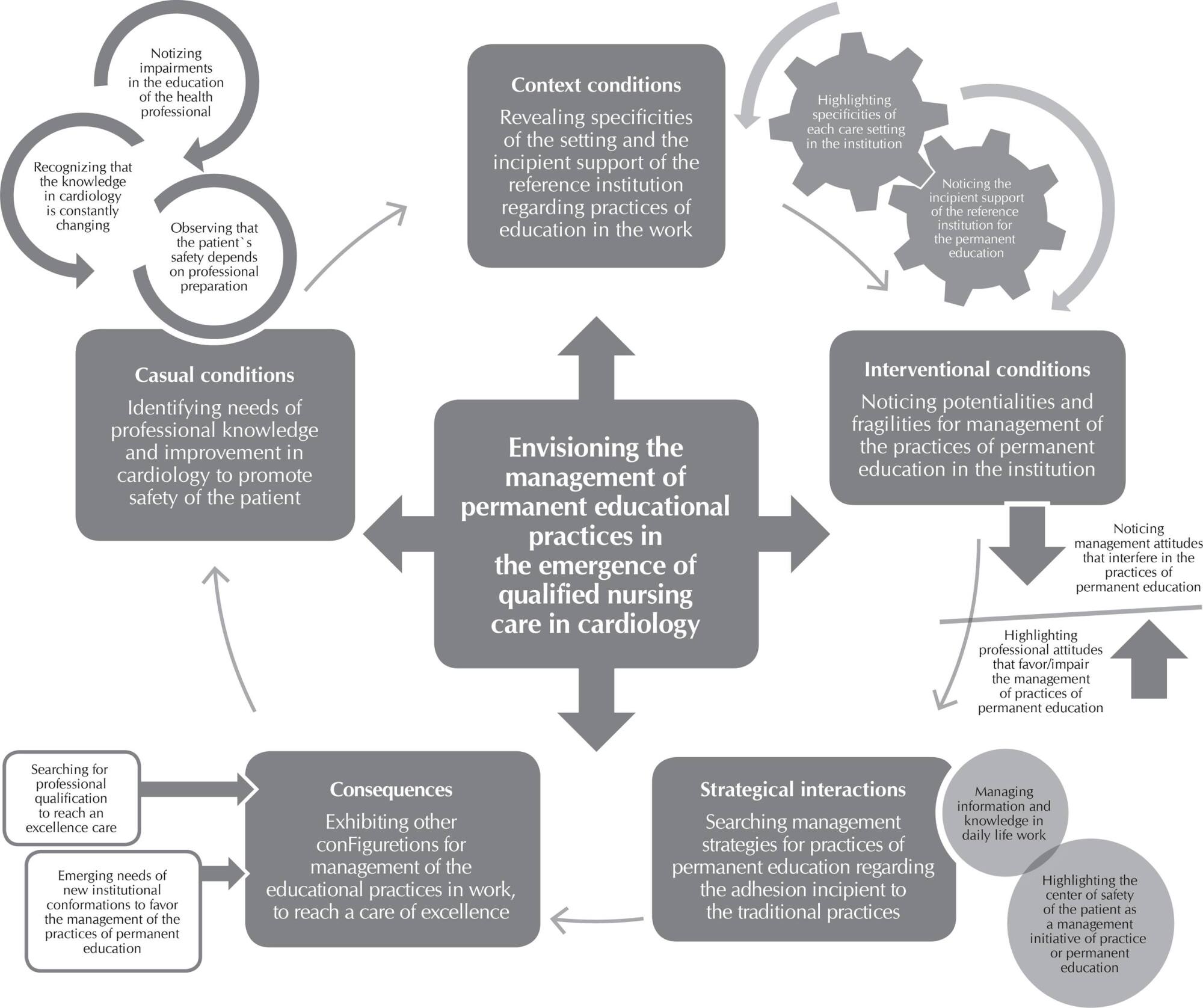
-
01-01-2016
Social representations of biosecurity in nursing: occupational health and preventive care
Revista Brasileira de Enfermagem. 2016;69(5):864-871
Abstract
Social representations of biosecurity in nursing: occupational health and preventive care
Revista Brasileira de Enfermagem. 2016;69(5):864-871
DOI 10.1590/0034-7167-2015-0114
Views0See moreABSTRACT
Objective:
to understand the biosecurity social representations by primary care nursing professionals and analyze how they articulate with quality of care.
Methods:
exploratory and qualitative research based on social representation theory. The study participants were 36 nursing workers from primary health care in a state capital in the Northeast region of Brazil. The data were analyzed by descending hierarchical classification.
Results:
five classes were obtained: occupational accidents suffered by professionals; occupational exposure to biological agents; biosecurity management in primary health care; the importance of personal protective equipment; and infection control and biosecurity.
Conclusion:
the different positions taken by the professionals seem to be based on a field of social representations related to the concept of biosecurity, namely exposure to accidents and risks to which they are exposed. However, occupational accidents are reported as inherent to the practice.
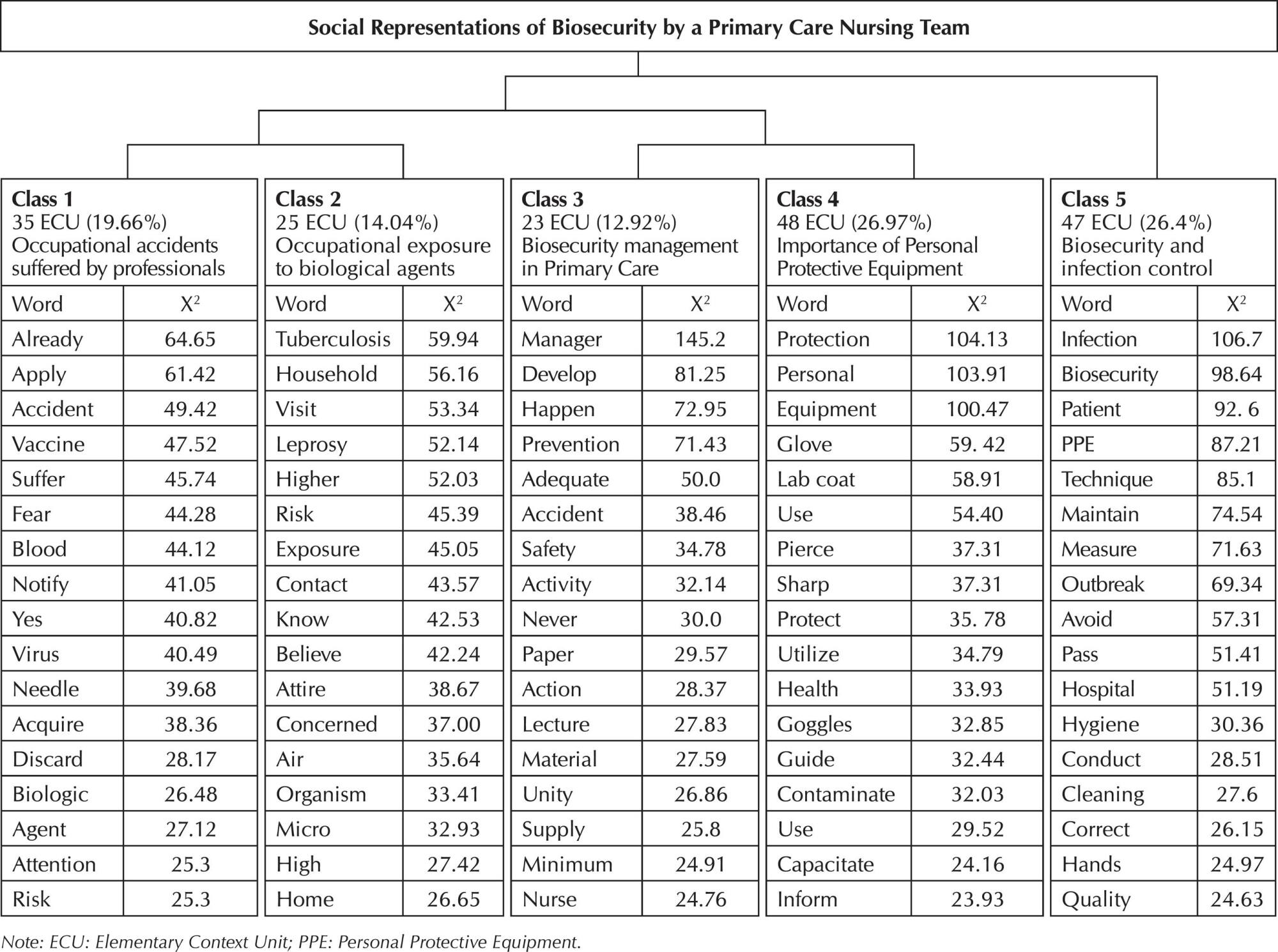
-
01-01-2016
Clinical validation of nursing diagnosis “Willingness for improved infant development”
Revista Brasileira de Enfermagem. 2016;69(5):855-863
Abstract
Clinical validation of nursing diagnosis “Willingness for improved infant development”
Revista Brasileira de Enfermagem. 2016;69(5):855-863
DOI 10.1590/0034-7167-2015-0131
Views0See moreABSTRACT
Objective:
to conduct the clinical validation of nursing diagnosis “Willingness for improved infant development”.
Method:
a cross-sectional study, conducted in a Centro de Saúde da Família (Family Health Care center), with 45 healthy breastfed infants. The instrument for collecting the data was prepared based on the literature and validated by nurses. It contained the following variables: sociodemographic, gestational, and obstetrical variables; breastfed infant’s nutritional profile; evaluation of the defining characteristics of the proposed nursing diagnosis.
Results:
all the defining characteristics were found to have high sensitivity values (>90%), positive predictive values (>65%), negative predictive values (>66%); however, low specificity values (<32%). In this study, the defining characteristics we found to have estimates (>0.50) within the ROC curve, which provides good sensitivity and specificity.
Conclusion:
this study verified the structural elements of the proposed nursing diagnosis to be relevant in the clinical context, which justifies the need for its being employed with children, taking into account its contribution to improving nursing care.
-
01-01-2016
Oral drugs at a hospital unit: adequacy for use via enteral feeding tubes
Revista Brasileira de Enfermagem. 2016;69(5):847-854
Abstract
Oral drugs at a hospital unit: adequacy for use via enteral feeding tubes
Revista Brasileira de Enfermagem. 2016;69(5):847-854
DOI 10.1590/0034-7167-2015-0081
Views0See moreABSTRACT
Objective:
to describe the profile of standardized oral drugs at a hospital unit and assess their adequacy for use via enteral feeding tubes, according to recommendations from the literature.
Method:
descriptive study, with data on drugs collected from the Pharmacy Service Dispensing System. Specific recommendations for the use of these drugs via enteral feeding tubes were found after searches in literary databases, books, manuals, guidelines and package insert collections.
Results:
among the 236 dispensed oral drugs, 86% were in solid form; of those, 32 were “non-crushable”, with the liquid form available at the institution. Twenty-eight drugs with potential interactions with enteral nutrition were identified. Sixty percent of those presented specific recommendations on their administration via enteral feeding tube.
Conclusion:
the joint participation of multidisciplinary nutritional therapy and care teams and the implementation of programs for continuous training are suggested strategies for the prevention of potential problems in the administration of drugs in the hospital setting.
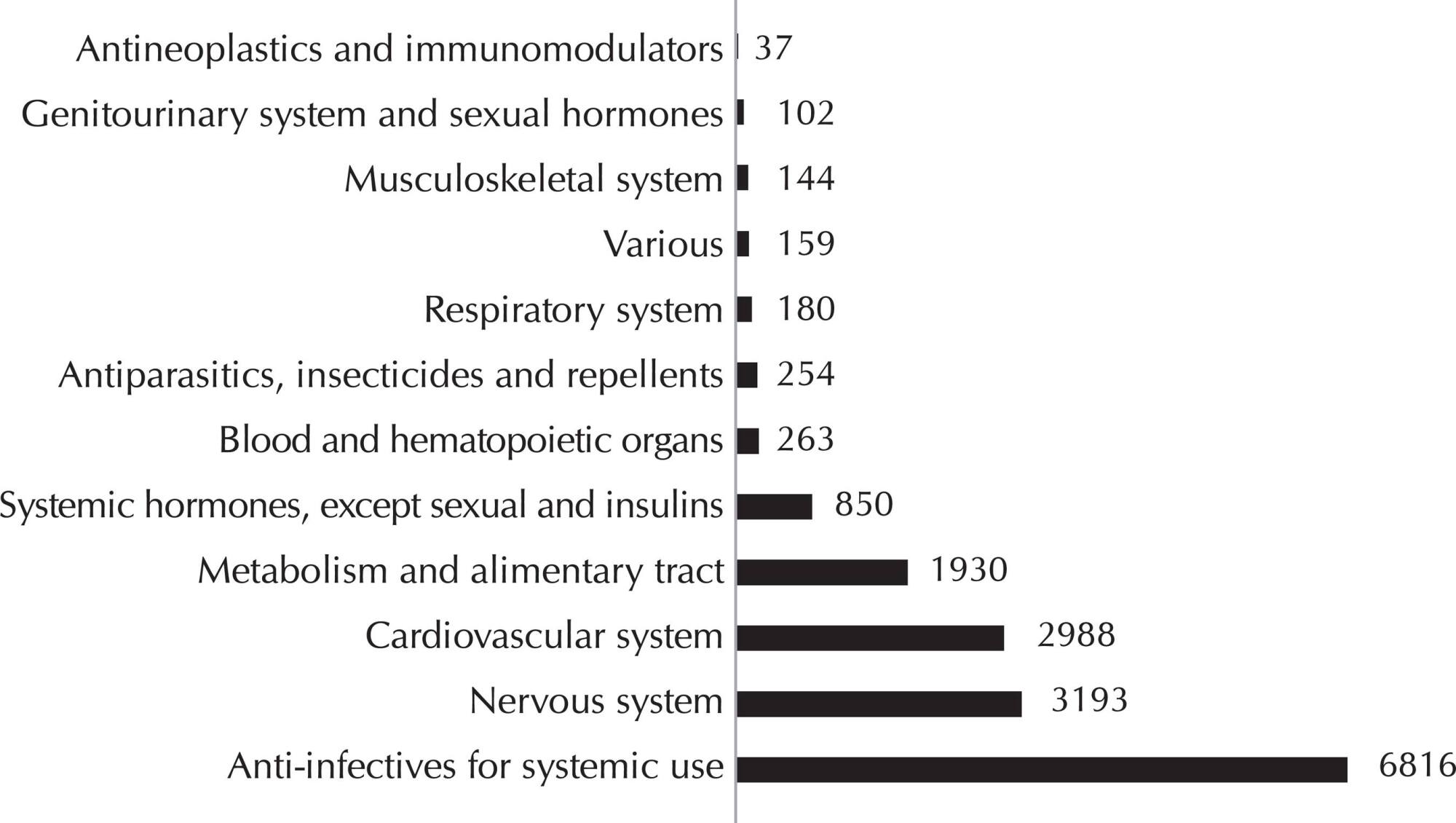
-
ORIGINAL ARTICLE03-20-2020
Cardiometabolic diseases and active aging – polypharmacy in control
Revista Brasileira de Enfermagem. 2020;73(2):e20180324
Abstract
ORIGINAL ARTICLECardiometabolic diseases and active aging – polypharmacy in control
Revista Brasileira de Enfermagem. 2020;73(2):e20180324
DOI 10.1590/0034-7167-2018-0324
Views0See moreABSTRACT
Objectives:
To estimate the prevalence of cardiometabolic diseases and their association with polypharmacy in elderly people at the University of the Third Age (Portuguese acronym: UnATI).
Methods:
A cross-sectional, descriptive, analytical study with 121 elderly patients. The prevalence ratio, Pearson’s Chi-square test and Fisher’s exact test were used as measures of association.
Results:
At the mean age of 68.3, most elderly had at least one cardiometabolic disease (82.6%), of which hypertension was the most prevalent (71.1%), and consumed prescription drugs of continuous use (92.6%). Almost half of the elderly (48.2%) used combinations of drugs, which suggests a high cardiovascular risk. Polypharmacy due to prescription was observed in almost one-third (28.6%) of the sample, associated with the use of antihypertensives (p=0.004), antidiabetics (p=0.000) or lipid-lowering agents (p<0.000).
Conclusions:
Clinical guidelines recommend changes in lifestyle, but increased pharmacotherapy prevails in practice, which increases the risk of adverse events, especially in old age.
-
REFLECTION02-15-2021
The belief in health in the adoption of COVID-19 prevention and control measures
Revista Brasileira de Enfermagem. 2021;74:e20200576
Abstract
REFLECTIONThe belief in health in the adoption of COVID-19 prevention and control measures
Revista Brasileira de Enfermagem. 2021;74:e20200576
DOI 10.1590/0034-7167-2020-0576
Views0See moreABSTRACT
Objective:
Reflect, in the light of the Health Belief Model, on the adoption of behavioral measures in the context of COVID-19.
Methods:
Theoretical-reflective essay, based on the Health Belief Model, to reflect on adherence to preventive behaviors in the pandemic of COVID-19.
Results:
Adherence to preventive behaviors is strongly influenced by socioeconomic, territorial, political and individual factors in the face of critical health situations. In addition, the spread of false news modulates the thinking and execution of behavioral actions in the population.
Final Considerations:
It is necessary to understand the importance of health communication processes and the use of tools aimed at responsible human behavior and engaged in the adoption of a preventive posture.
-
REVIEW03-30-2020
Care of the self in the daily living of nurses: an integrative review
Revista Brasileira de Enfermagem. 2020;73(2):e20180668
Abstract
REVIEWCare of the self in the daily living of nurses: an integrative review
Revista Brasileira de Enfermagem. 2020;73(2):e20180668
DOI 10.1590/0034-7167-2018-0668
Views0See moreABSTRACT
Objectives:
to identify if nurses care for themselves and describe such practices.
Methods:
this is an integrative review of the literature published between 2006 and 2018 and indexed in the Literatura Latino-Americana e do Caribe em Ciências da Saúde, Medical Literature Analysis and Retrieval System Online and Web of Science databases.
Results:
the sample totaled 20 articles, grouped by content similarity in the thematic categories “limits and possibilities for the care of the self”, “knowledge about practices on the care of the self” and “implications of care of the self in professional practice”.
Final considerations:
the knowledge about techniques on caring for the self allows nurses to develop themselves personally and professionally. We suggest to managers and administrators a redirection of the nursing practice that contemplates the strengthening of the nurse as the manager of care and leader of the team, as well as the inclusion of the concept of care of the self in the curricula of undergraduate and graduate nursing courses.
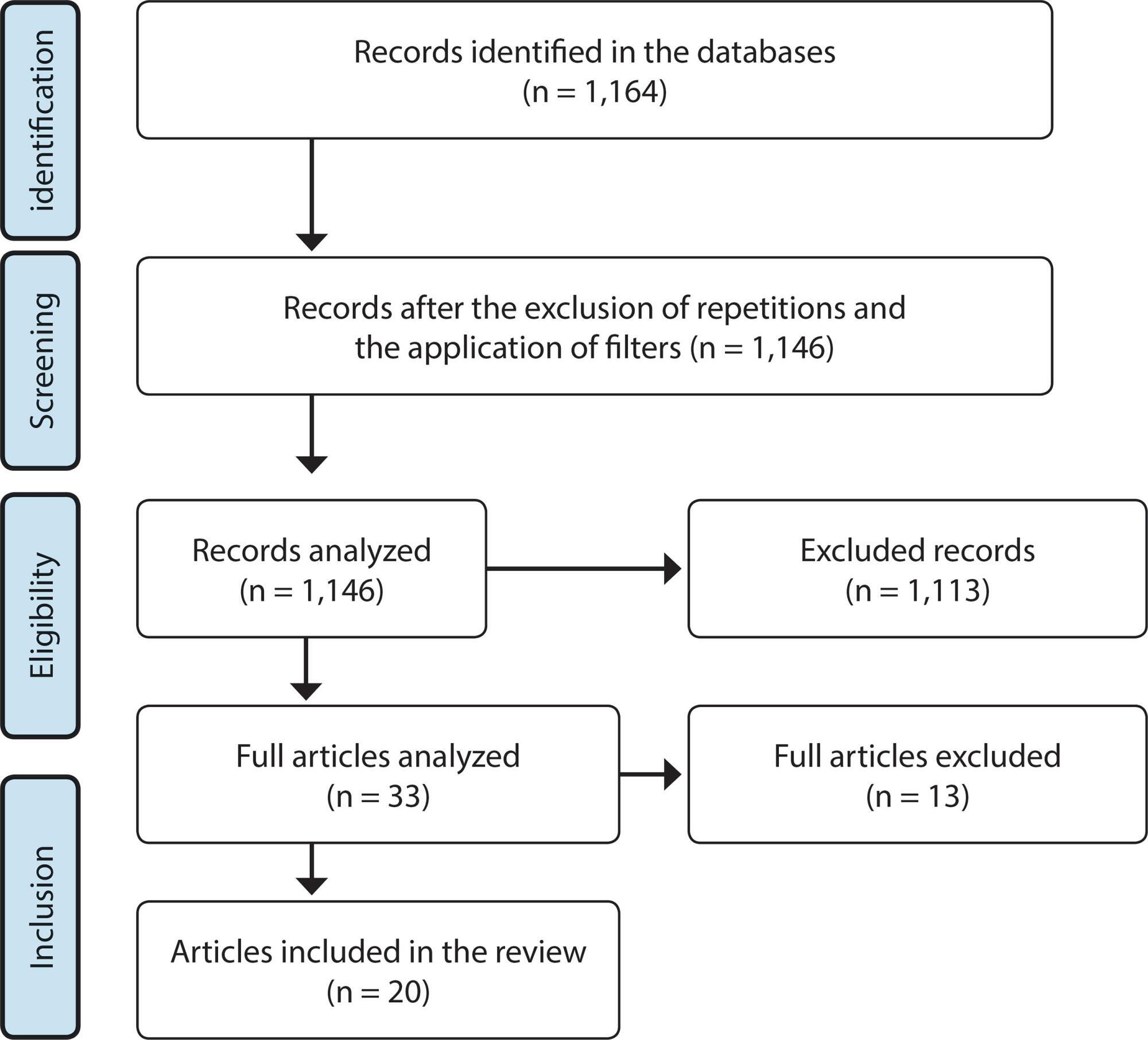
-
ORIGINAL ARTICLE06-01-2020
Workplace violence types in family health, offenders, reactions, and problems experienced
Revista Brasileira de Enfermagem. 2020;73:e20190055
Abstract
ORIGINAL ARTICLEWorkplace violence types in family health, offenders, reactions, and problems experienced
Revista Brasileira de Enfermagem. 2020;73:e20190055
DOI 10.1590/0034-7167-2019-0055
Views0See moreABSTRACT
Objective:
to identify the types of violence that affect the health team in Family Health Units, their offenders, reactions and problems experienced by workers.
Method:
a cross-sectional, concurrent mixed-type research. The Survey Questionnaire Workplace Violence in the Health Sector was applied to 106 workers from Family Health Units. Of these, 18 answered the semi-structured interview.
Results:
verbal aggression (65.1%), bullying (14.2%), racial discrimination (10.4%), physical assault (8.5%) and sexual harassment (4.7%) were prevalent. Patients were the main perpetrators of verbal aggression (79.4%) and bullying (46.7%). Workers responded by telling co-workers and reporting to the boss. Victims remained over-alert, vigilant and tense, relating exposure to violence to absenteeism and the desire to leave the profession.
Conclusion:
verbal aggression is the most common violence with negative impact on workers’ health and work performed.
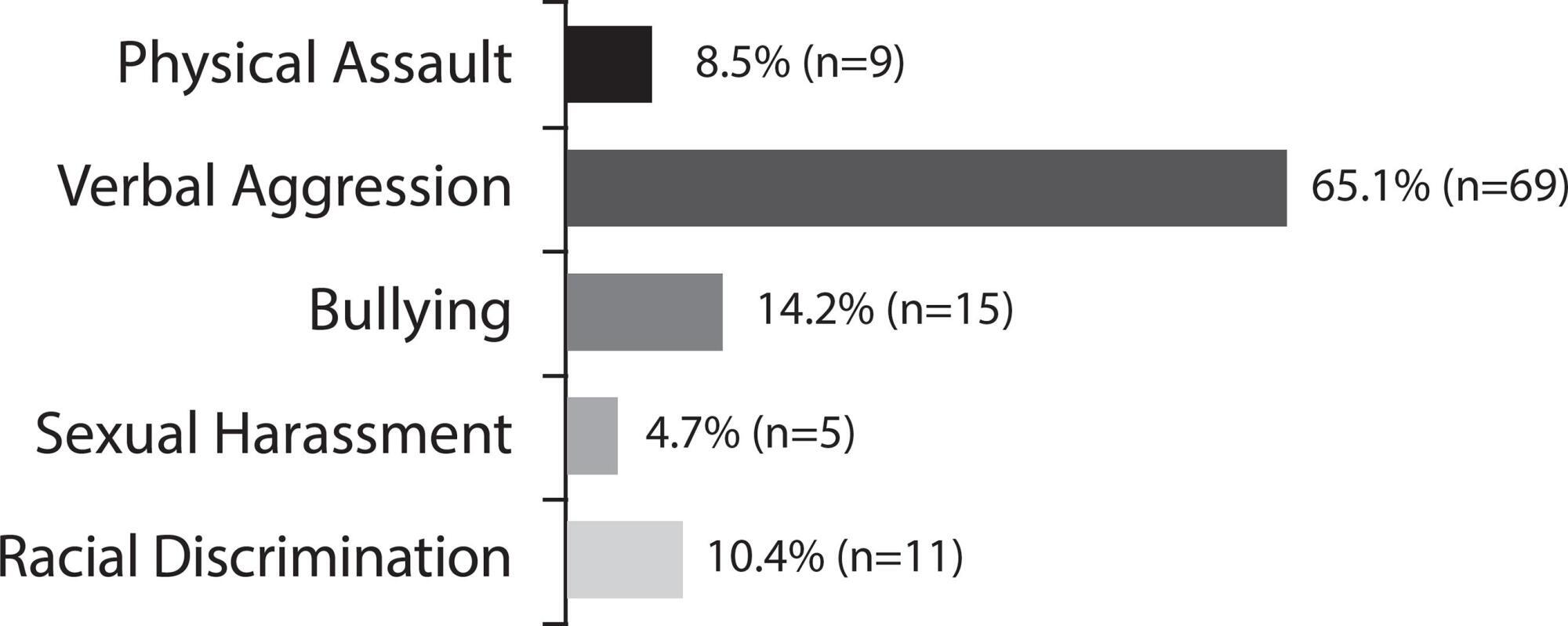
-
ORIGINAL ARTICLE10-21-2019
Consumption of alcohol and drugs and school absenteeism among high school students of public schools
Revista Brasileira de Enfermagem. 2019;72(6):1692-1698
Abstract
ORIGINAL ARTICLEConsumption of alcohol and drugs and school absenteeism among high school students of public schools
Revista Brasileira de Enfermagem. 2019;72(6):1692-1698
DOI 10.1590/0034-7167-2018-0828
Views0See moreABSTRACT
Objective:
To evaluate the relation between the consumption of alcohol and other drugs and school absenteeism in high school students of public schools in the 30 days prior to data collection.
Method:
Cross-sectional study of quantitative character conducted from May to September 2017, with 282 high school students of public schools of Mossoró-RN. We used a closed questionnaire with questions about drug consumption as our instrument of analysis. We performed hierarchical binary logistic regression by using the SPSS 20.0.
Results:
In bivariate analysis, the relation between absenteeism and drug consumption patterns proved to be significant to those who engage in heavy episodic drinking of alcohol and in the use of tobacco, inhalants and marijuana. The adjusted regression model only included the variables tobacco and heavy episodic drinking of alcohol.
Conclusion:
The hierarchical binary logistic regression analysis corroborated with absenteeism outcomes, explaining it in 12.3% of cases.
-
09-16-2019
Leprosy educational practices with adolescents: an integrative literature review
Revista Brasileira de Enfermagem. 2019;72(5):1397-1404
Abstract
Leprosy educational practices with adolescents: an integrative literature review
Revista Brasileira de Enfermagem. 2019;72(5):1397-1404
DOI 10.1590/0034-7167-2017-0458
Views0See moreABSTRACT
Objectives:
to identify scientific evidence in the literature regarding educational actions on leprosy developed with adolescents.
Method:
an integrative review of the literature, with the following research question: what are the leprosy educational practices currently being developed with adolescents? The search was performed in the following databases: MEDLINE, Scopus, LILACS, CINAHL, BVS Hanseníase and other sources, using “adolescent”; “leprosy”; “health education”; “public health”, and “public health practice” as keywords. Results: the sample was comprised of nine studies. Leprosy educational practices with adolescents verifiably promote change in knowledge when they are based on constructivist methodologies. The nurse is recognized as a professional with potential for developing these educational practices. Final considerations: actions for leprosy education with adolescents do lead to changes in knowledge, but new research is needed to evaluate their effectiveness in further improving this knowledge as well as changing behaviors and practices.
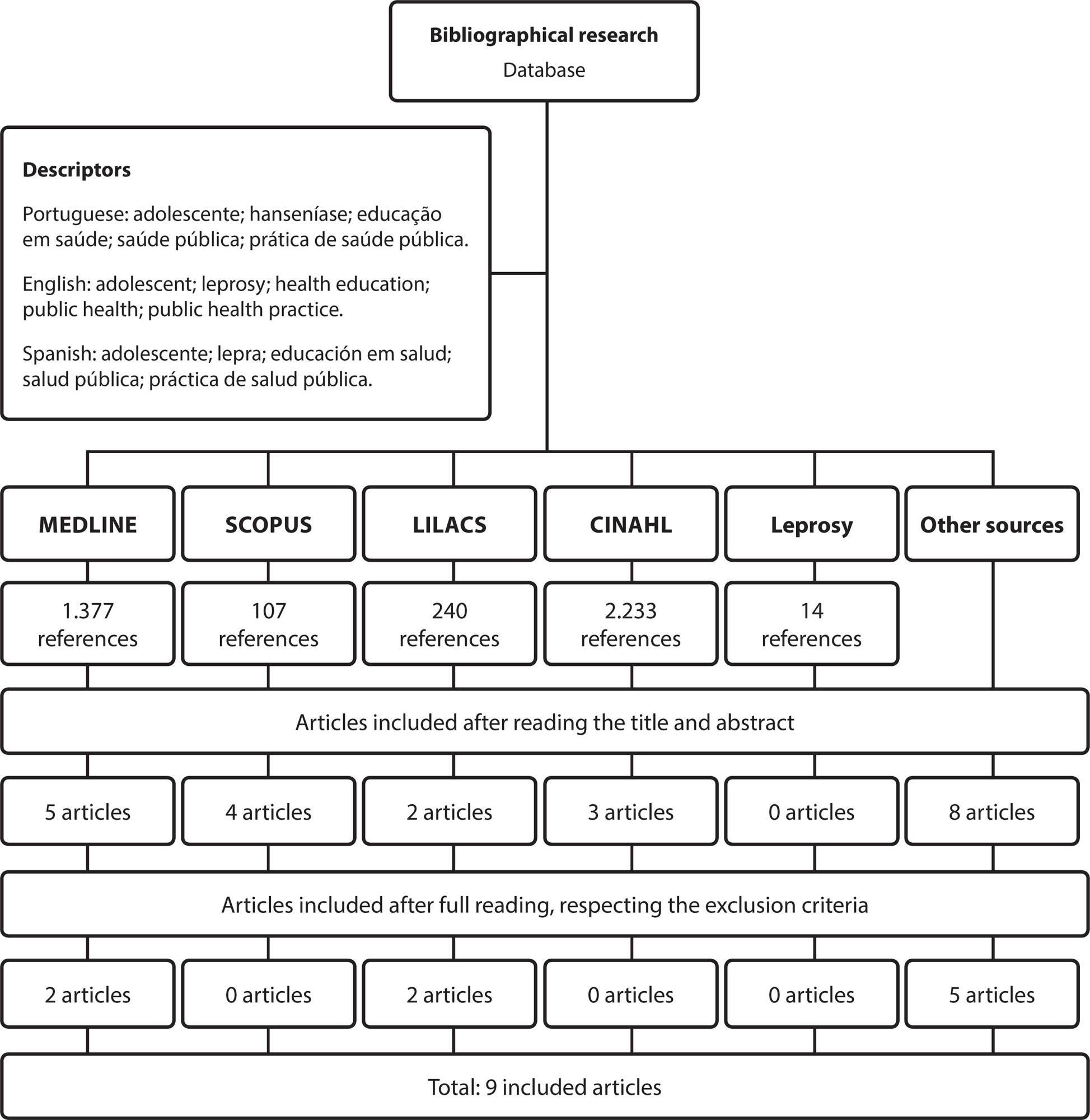
-
ORIGINAL ARTICLE02-17-2020
Predictive model of hospitalization for children and adolescents with chronic disease
Revista Brasileira de Enfermagem. 2020;73(2):e20180467
Abstract
ORIGINAL ARTICLEPredictive model of hospitalization for children and adolescents with chronic disease
Revista Brasileira de Enfermagem. 2020;73(2):e20180467
DOI 10.1590/0034-7167-2018-0467
Views0See moreABSTRACT
Objectives:
Describe a predictive model of hospitalization frequency for children and adolescents with chronic disease.
Methods:
A decision tree-based model was built using a database of 141 children and adolescents with chronic disease admitted to a federal public hospital; 18 variables were included and the frequency of hospitalization was defined as the outcome.
Results:
The decision tree obtained in this study could properly classify 80.85% of the participants. Model reading provided an understanding that situations of greater vulnerability such as unemployment, low income, and limited or lack of family involvement in care were predictors of a higher frequency of hospitalization.
Conclusions:
The model suggests that nursing professionals should adopt prevention actions for modifiable factors and authorities should make investments in health promotion for non-modifiable factors. It also enhances the debate about differentiated care to these patients.

-
ORIGINAL ARTICLE09-07-2020
Profile and entrepreneurial intention of nursing students: a comparison between Brazil and Chile
Revista Brasileira de Enfermagem. 2020;73(6):e20190890
Abstract
ORIGINAL ARTICLEProfile and entrepreneurial intention of nursing students: a comparison between Brazil and Chile
Revista Brasileira de Enfermagem. 2020;73(6):e20190890
DOI 10.1590/0034-7167-2019-0890
Views0See moreABSTRACT
Objective:
to identify and compare factors associated with profile, intentions, motivations, and barriers to entrepreneurial behavior of nursing students from Brazil and Chile.
Methods:
this cross-sectional study was carried out between March and September 2018 including 889 nursing students. A form was used to assess the socio-demographic profile, professional claims, entrepreneurial intentions and motivations. Statistical analysis used Chi-Square and Fisher’s Exact tests, with a 5% significance level, and a simple logistic regression model.
Results:
there are significant differences between countries in the profile of students and in the motivations studied, but not in professional pretensions and entrepreneurial intentions. Lack of education on the subject reveals itself as an important barrier to entrepreneurship.
Conclusion:
given the lack of teaching entrepreneurship in undergraduate nursing courses and the characteristics inherent to students, education must be appropriate to different cultures to prepare future professionals for other areas of practice.
Search
Search in:
Nuvem de Tags
Adolescente (85) Atenção Primária à Saúde (239) COVID-19 (91) Criança (91) Cuidados de Enfermagem (269) Educação em Enfermagem (151) Educação em Saúde (139) Enfermagem (930) Enfermagem Pediátrica (86) Estudantes de Enfermagem (77) Estudos de Validação (131) Família (87) Idoso (208) Promoção da Saúde (99) Qualidade de Vida (104) Saúde do Trabalhador (86) Saúde Mental (145) Saúde Pública (82) Segurança do Paciente (150) Tecnologia Educacional (100)



